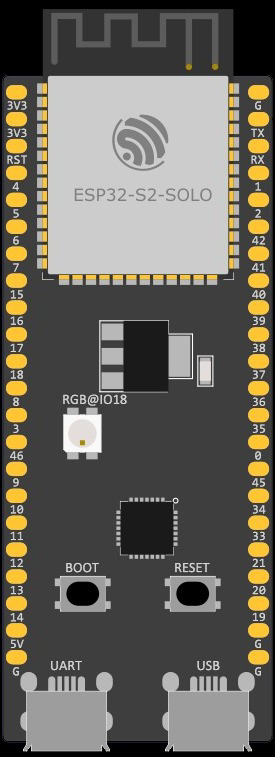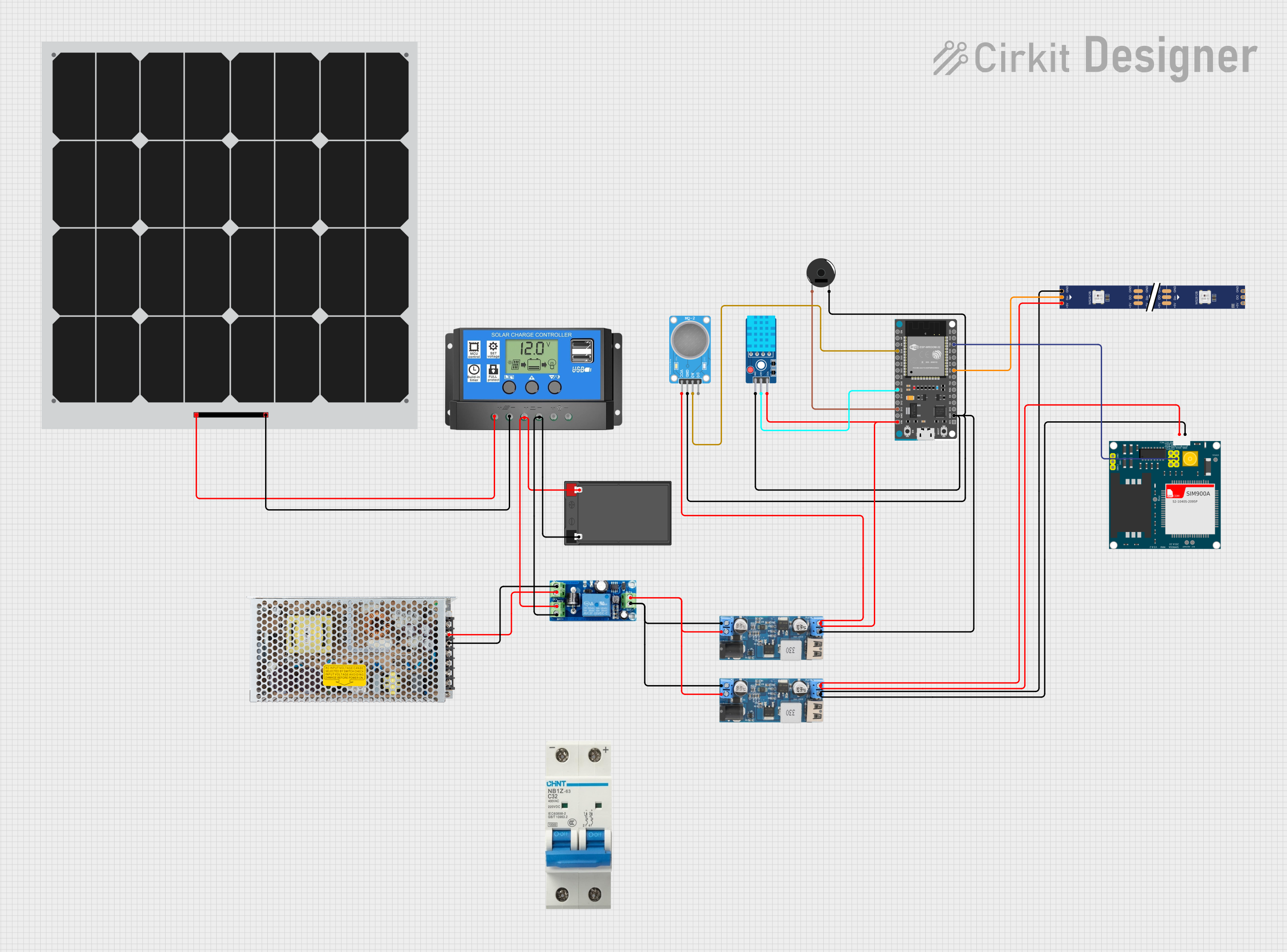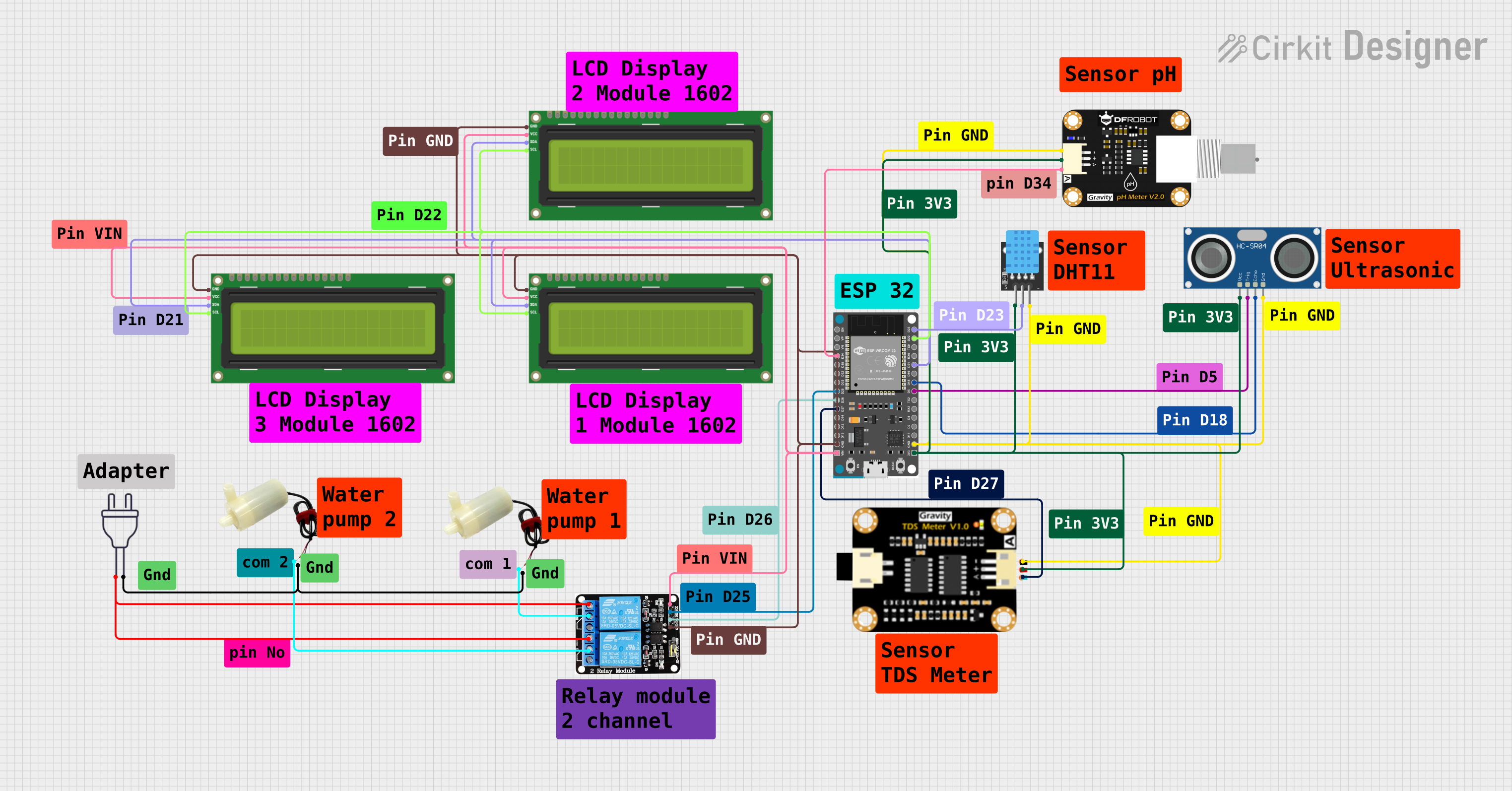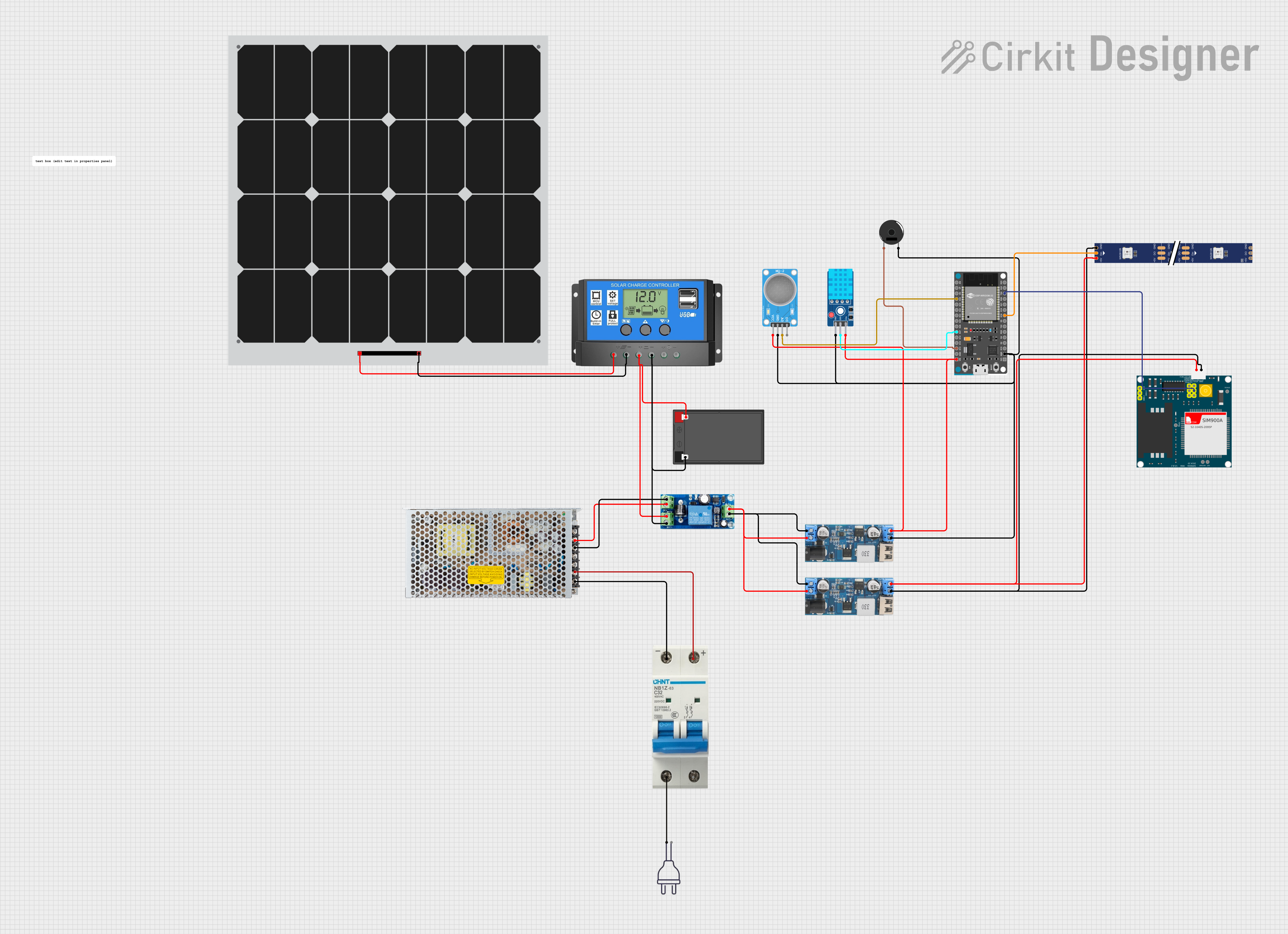
How to Use esp32 s2 devkitc-1: Examples, Pinouts, and Specs

 Design with esp32 s2 devkitc-1 in Cirkit Designer
Design with esp32 s2 devkitc-1 in Cirkit DesignerIntroduction
The ESP32-S2-DevKitC-1 is a development board manufactured by Espressif. It is built around the ESP32-S2 chip, which features a single-core Xtensa® LX7 processor, integrated Wi-Fi, and a rich set of peripherals. This board is designed for IoT (Internet of Things) applications, offering a cost-effective and versatile platform for prototyping and development.
Explore Projects Built with esp32 s2 devkitc-1

 Open Project in Cirkit Designer
Open Project in Cirkit Designer
 Open Project in Cirkit Designer
Open Project in Cirkit Designer
 Open Project in Cirkit Designer
Open Project in Cirkit Designer
 Open Project in Cirkit Designer
Open Project in Cirkit DesignerExplore Projects Built with esp32 s2 devkitc-1

 Open Project in Cirkit Designer
Open Project in Cirkit Designer
 Open Project in Cirkit Designer
Open Project in Cirkit Designer
 Open Project in Cirkit Designer
Open Project in Cirkit Designer
 Open Project in Cirkit Designer
Open Project in Cirkit DesignerCommon Applications and Use Cases
- IoT devices and smart home applications
- Wireless sensor networks
- Industrial automation
- Wearable devices
- Low-power applications requiring Wi-Fi connectivity
- Prototyping for embedded systems
Technical Specifications
The following are the key technical details of the ESP32-S2-DevKitC-1:
| Specification | Details |
|---|---|
| Chip | ESP32-S2 (Xtensa® LX7 single-core processor) |
| Wi-Fi | 802.11 b/g/n (2.4 GHz) |
| Flash Memory | 4 MB (default, may vary by model) |
| SRAM | 320 KB (internal) + 128 KB (ROM) |
| Operating Voltage | 3.3 V |
| GPIO Pins | 37 GPIOs (multiplexed with other functions) |
| ADC Channels | 14 channels (12-bit resolution) |
| Interfaces | SPI, I2C, I2S, UART, PWM, RMT, USB OTG |
| USB Connectivity | Full-speed USB OTG (On-The-Go) |
| Power Supply | 5 V via USB or external 3.3 V supply |
| Operating Temperature | -40°C to +85°C |
| Dimensions | 52 mm x 25 mm |
Pin Configuration and Descriptions
The ESP32-S2-DevKitC-1 features a dual-row header with the following pinout:
| Pin | Name | Function |
|---|---|---|
| 1 | 3V3 | 3.3 V power output |
| 2 | GND | Ground |
| 3 | GPIO0 | General-purpose I/O, boot mode selection |
| 4 | GPIO1 | General-purpose I/O |
| 5 | GPIO2 | General-purpose I/O |
| 6 | GPIO3 | General-purpose I/O |
| 7 | GPIO4 | General-purpose I/O |
| 8 | GPIO5 | General-purpose I/O |
| 9 | EN | Chip enable (active high) |
| 10 | IOREF | Reference voltage for I/O |
| 11 | ADC1_CH0 | Analog input channel 0 |
| 12 | ADC1_CH1 | Analog input channel 1 |
| ... | ... | ... (Refer to the official datasheet for the full pinout) |
Note: Some GPIO pins are multiplexed with other functions (e.g., ADC, UART). Refer to the ESP32-S2 datasheet for detailed pin capabilities.
Usage Instructions
How to Use the ESP32-S2-DevKitC-1 in a Circuit
Powering the Board:
- Connect the board to a computer or USB power source using a micro-USB cable.
- Alternatively, supply 3.3 V directly to the 3V3 pin and GND to the GND pin.
Programming the Board:
- Install the Arduino IDE or Espressif IDF (IoT Development Framework).
- Add the ESP32-S2 board support package to your development environment.
- Connect the board to your computer via USB and select the appropriate COM port.
Connecting Peripherals:
- Use the GPIO pins to connect sensors, actuators, or other peripherals.
- Ensure that the voltage levels of connected devices are compatible with the 3.3 V logic of the ESP32-S2.
Flashing Code:
- Write your code in the Arduino IDE or Espressif IDF.
- Compile and upload the code to the board.
- Use the serial monitor to debug or view output.
Example: Blinking an LED with Arduino IDE
The following example demonstrates how to blink an LED connected to GPIO2:
// Define the GPIO pin where the LED is connected
#define LED_PIN 2
void setup() {
// Set the LED pin as an output
pinMode(LED_PIN, OUTPUT);
}
void loop() {
// Turn the LED on
digitalWrite(LED_PIN, HIGH);
delay(1000); // Wait for 1 second
// Turn the LED off
digitalWrite(LED_PIN, LOW);
delay(1000); // Wait for 1 second
}
Important Considerations and Best Practices
- Voltage Levels: Ensure all connected peripherals operate at 3.3 V logic levels. Use level shifters if necessary.
- Boot Mode: GPIO0 is used for boot mode selection. Avoid pulling it high during boot if not required.
- Power Supply: Use a stable power source to avoid unexpected resets or malfunctions.
- USB OTG: If using USB OTG functionality, ensure proper configuration in the firmware.
Troubleshooting and FAQs
Common Issues and Solutions
Board Not Detected by Computer:
- Ensure the USB cable is functional and supports data transfer.
- Install the correct USB-to-serial driver for the ESP32-S2.
Code Fails to Upload:
- Check that the correct COM port is selected in the IDE.
- Hold the BOOT button while pressing the EN button to enter flashing mode.
Wi-Fi Connection Issues:
- Verify the SSID and password in your code.
- Ensure the Wi-Fi network operates on the 2.4 GHz band (not 5 GHz).
GPIO Pin Not Working:
- Confirm the pin is not being used for another function (e.g., ADC, UART).
- Check for proper wiring and connections.
FAQs
Q: Can I use the ESP32-S2-DevKitC-1 with MicroPython?
A: Yes, the ESP32-S2 supports MicroPython. Flash the MicroPython firmware to the board and use a serial terminal or IDE like Thonny.
Q: What is the maximum current output of the 3V3 pin?
A: The 3V3 pin can supply up to 500 mA, depending on the input power source.
Q: Does the ESP32-S2 support Bluetooth?
A: No, the ESP32-S2 only supports Wi-Fi. For Bluetooth functionality, consider the ESP32 or ESP32-C3 series.
Q: How do I reset the board?
A: Press the EN button to reset the board.
For more detailed information, refer to the official Espressif ESP32-S2-DevKitC-1 datasheet.